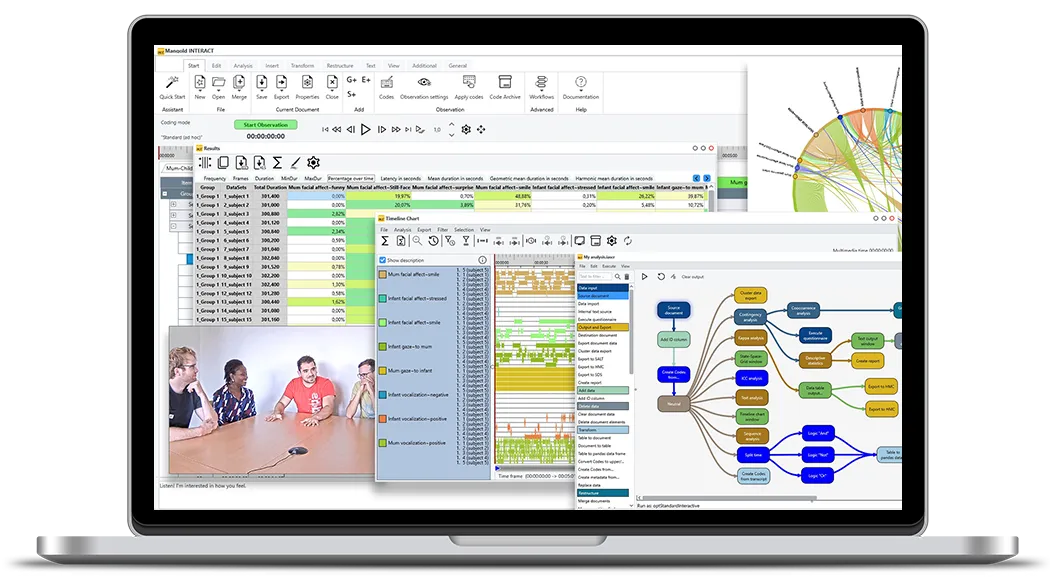Research · 2 min read
Using Sequential Analysis to Study Group Dynamics in Project Meetings
Learn about a research study from TU Braunschweig and University of Barcelona examining group interaction dynamics in project meetings using Mangold INTERACT for sequential analysis.
Group Interaction Study
Group interaction study from TU Braunschweig and University of Barcelona about Group Dynamics, using Mangold INTERACT.
Authors: Florian E. Klonek (a), Vicenç Quera (b), Manuel Burba (a), & Simone Kauffeld (a)
(a) Technische Universität Braunschweig, (b) Universitat de Barcelona
Method
Video-recorded observations of group interactions present a unique challenge for group researchers.
This paper presents methodological advice how to perform sequential analysis when collecting observational timed-event data of group discussions.
Sequential analyses is a statistical method that examines dynamic behavioral sequences in group interactions. To exemplify the method, we present data from one industry project team which was video-taped during 24 consecutive meetings.
Meeting behaviors were coded into different categories (e.g., procedural and action oriented communication). We compared sequential behavioral patterns in meetings from the first and second half of the project. We provide guidelines on the topic of interrater reliability and report a detailed psychometric analysis of the observational instrument.
Conclusion
Overall, we show that positive procedural communication can inhibit dysfunctional communication patterns in group meetings. Our results also show that communication patterns of negative action-orientation only appeared in the second half of the project. This study extends previous group research on micro-sequential patterns with respect to larger scale macro-temporal group dynamics. Overall, we provide practical suggestions for researchers who aim to run observational research and aim to look for sequential dynamics in video-recorded team interactions…
This study was conducted using the Mangold INTERACT software .
INTERACT: One Software for Your Entire Observational Research Workflow
From audio/video-based content-coding and transcription to analysis - INTERACT has you covered.
